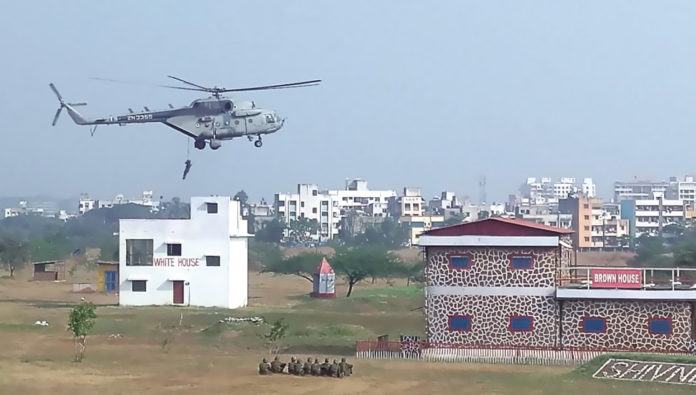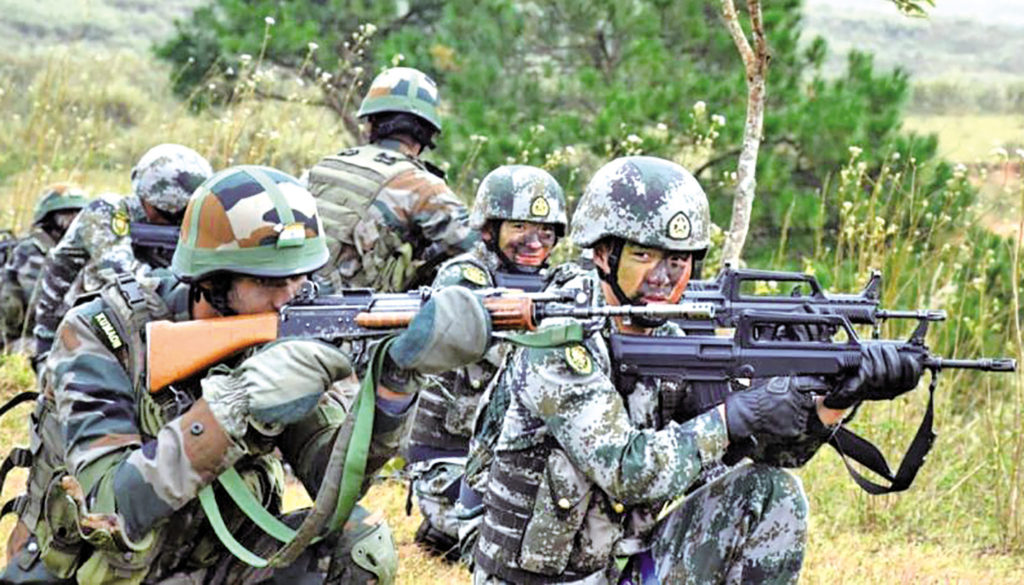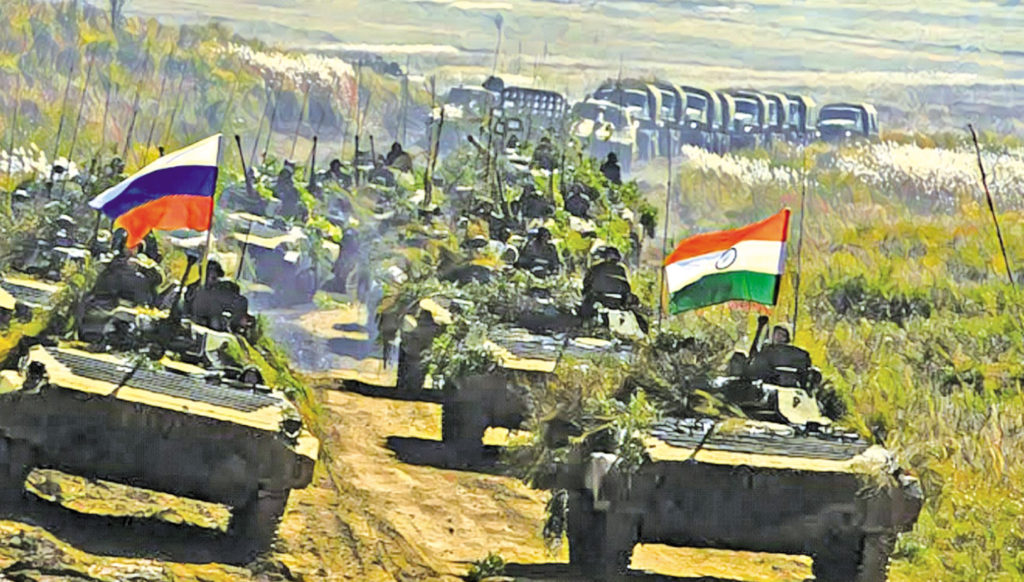
A headline in a prominent newspaper of 7 December 2019, “Shoddy ammo from ordnance factories hitting military: CAG”, once again brought the Indian ordnance factories (OFs) into focus. The Indian Army had told the defence ministry that the rise in ammunition-related accidents, taking place once a week on an average, were causing “fatalities, injuries and damage to equipment” regularly. This, in turn, was “leading to the Army’s loss of confidence in most types of ammunition” being manufactured by Ordnance Factory Board (OFB).
The OFB was constituted in the year 1935, and functions under the administrative control of the Department of Defence Production (DDP), Ministry of Defence (MoD), has 41 factories divided into five product-based Operating Groups. These are:
• Ammunition & Explosives
Weapons, Vehicles and Equipment
• Materials and Components
• Armoured Vehicles
• Ordnance Equipment (Clothing & General Stores).
It has a total workforce of about 82,000. OFs were basically set up to cater to the requirement of Indian Armed Forces. The core activity of OFs is to produce and supply arms, ammunition, armoured vehicles, ordnance stores, etc. Utilizing the spare capacity, the OFB also supplies arms and ammunition to the paramilitary forces, State police and other government departments and also for civil indenters including export. These items include anti-tank guns, antiaircraft guns, field guns, mortars, small arms, sporting arms including their ammunitions, bombs, rockets, projectiles, grenades, mines, demolition charges, depth charges, pyrotechnic stores, fuses, transport vehicles, optical and fire control instruments, bridges, assault boats, clothing and leather items, parachutes, etc. These product ranges collectively constitute nearly 84 per cent of the gross value of production of the all the OFs.
OFB is reportedly the world’s largest government-operated production organization and the oldest organization run by the Government of India. OFB’s total sales were $2 billion (Rs 13,687.22 cr) in 2017-18. Arms and ammunition, weapon spares, chemicals and explosives, parachutes, leather and clothing items are exported to more than 30 countries worldwide. Some recent successes suggest a hidden potential in the OFs. One such breakthrough is the ‘Dhanush’ 155 mm gun, an indigenously produced upgraded version of the Bofors howitzer. The first batch of six guns successfully passed field trials, opening up both an opportunity and a dilemma. The OFB has an order for building 414 howitzers, for which it lacks the capacity to produce. At current production rates, it would take the OFB more than a decade to deliver. Meanwhile, Indo-Russia Rifles Pvt Ltd joint venture will produce the AK-203 assault rifles at an Ordnance Factory in Korwa, Amethi.
Indian Air Force Products
The Indian Air Force (IAF) related operational stores being developed or manufactured include many air-armament stores. These include air-dropped iron bombs, training stores, initiatory explosives, empty shell casings of 250 kg and 450 kg bombs, rockets, missiles war-heads, small arms ammunition, tracer ammunition, propellants and explosives, pyrotechnic compositions, 30mm aircraft ammunition, fuses, transport & logistic vehicles, 23mm Ghasha twin-barrel gun for MiG aircraft, airfield lighting equipment, brake parachute, supply dropping and pilot parachutes.
The non-technical stores includes all items of uniform clothing, including materials, stitching, shoes and socks, bedding items like mosquito nets, durries and tents, etc. Rs.764 crore purchase by IAF in 2018-19 was mostly related to clothing. Other than quality and life of items, it has been noticed that items like boots and woolen jersey of similar material and design were available in the open market at nearly half the price. OFB has been long criticized by the armed forces for supplying substandard, overpriced equipment. Over 80 per cent of the OFB’s orders come from the Indian Army. Only around 10 per cent each are for Indian Navy and IAF.
The supersonic Akash missile system, which was formally inducted into the IAF In July 2015, has been designed by the Defence Research & DEvelopment Organisation (DRDO) and manufactured by OFB, Bharat Dynamics Limited (BDL) and Bharat Electronics Limited (BEL). OFB has been making the Akash and Trishul missile launchers. OFB was also a bidder, along with BEL as partner, for the IAF’s September 2018, Rs 15,000 crore contract for a Close-in Weapon System (CIWS). These systems are capable of taking down drones, small aircraft and incoming missiles. Other Indian companies have tied with up foreign partners for the bid, with three frontrunners that include Bharat Forge that has a tie-up with BAE systems, Reliance has a partnership with Hanwha and Thales. The contract requires that at least 40 per cent of the content must be indigenized and that Indian companies be the lead bidder for the contest. It will, however, take at least three years before a contract can be signed as the next steps include field trial and evaluations.
General Quality Issues
Shoddy manufacture of critical ammunition came to the fore with the CAG castigating OFB for compromising operational military readiness by failing to meet a “significant quantity” of the Army’s requirements as well as supplying defective fuses leading to multiple accidents. Tabled in Parliament in August, the CAG report on the OFB’s performance for 2017-2018 said that at least 36 accidents occurred from 2013-14 to 2017-18 due to “fuse-related defects/problems” in nine types of ammunition that were studied. These included 81 mm high-explosive (HE) mortar bombs, 40 mm HE rounds for L-70 air defence guns, 84 mm ‘illuminating’ munitions for rocket launchers and 125 mm HE shells for T-72 tanks, it said. Fuses are an essential and critical part of ammunition to provide safe and reliable detonation at the desired time and place. Defective fuses can lead to bursting of barrels as well as accidental and premature explosions. Apart from “inadequate quality checks”, there were “abnormal delays” in completing such “defect investigations”, which stymied “remedial” measures by the factories concerned, the CAG said. “Moreover, a significant quantity of the Army’s demands for some principal ammunition items remained outstanding as of 31 March 2018, thus, adversely affecting its operational preparedness. The factories achieved production targets for only 49% items in 2017-18,” the report said. The Army is the OFB’s biggest client, accounting for almost 80 per cent of its total production worth over Rs 14,000 crore every year. The CAG report also noted that the OFB had “very meager” exports of just Rs 13.9 crore in 2017-18.
OFB reacted sharply to the CAG report. A ‘red box’ system has been adopted since 2013 through which 1 per cent ammunition is used immediately after production to eliminate causative factors such as storage defects as well as use of expired stock. It also helps in detecting manufacturing defects, if any. In 99.98 per cent cases, the ammunition produced at OFB cleared the trials and is world class, said OFB officials. Accidents did not necessarily happen due to defective ammunition. Lack of equipment maintenance and improper operational drills were also to blame, officials said.
During the financial year 2018-19, the OFB supplied material worth Rs.10,900 crore to the Army, Rs.458 crore to the Indian Navy and Rs.764 crore to the IAF. In addition, the home ministry bought arms and ammunition worth Rs.1,260 crore.
IAF-OFB Issues
Bomb fuses are a critical operational item being manufactured by the OFB for the IAF. A Jaguar aircraft in a live bombing practice mission in 2004 crashed when a bomb fuse reportedly malfunctioned and the bomb exploded just under the aircraft, causing the aircraft also to explode. The pilot could not eject safely. Thereafter, the IAF had to import fuses.
The CAG, in 2018 for audit of period 2012-17, had pointed out significant delay for nine parachute items by the OF in Kanpur and deficiencies of these items to the extent of 33 to 100 per cent. The Ordnance Parachute Factory Kanpur (OPF) manufactures various parachutes for the armed forces. Users’ requirement of parachutes is of significant importance because of their strategic use in man carrying, supply drop, emergency escape of pilots from aircraft, for aborted take-off and to reduce landing run length of aircraft. The shortfall occurred mainly due to delayed procurement and receipt of input materials, limited vendor base and delay in resolving drawing/specification issues.
Restructuring of OFB
The OFB has often been referred to as a ‘white elephant’. In August 2019, the Indian Government decided to go ahead with corporatization of ordnance factories in order to reduce the import dependency of defence equipment, enhance combat efficiency of the Armed Forces and increase the profitability of the entities for greater employment generation. The decision to convert the factories into public sector enterprises was taken after considering recommendations of at least three committees formed in the past to examine their functioning. According to the government, the OFs do not function in a competitive environment and have, over the years, been marred by issues pertaining to quality of products, high costs, lack of innovation and low productivity. With a structure not conducive to sustain itself in the market, sources said the government foresees the state-owned factories turning into white elephants in the near future unless emphasis is laid on private sector defence production under the ‘Make in India’ initiative.
“The present structure of the board is inconsistent with the requirements of a production centre, which needs a lot of flexibility at the managerial and functional levels. Decisions like modernization of plant and machinery, entering into joint ventures or transfer-of-technology agreements are subject to government regulations. The board has no incentive to make profits. It cannot compete with private industries that have all managerial and technical flexibilities required for production and marketing activities,” said a Ministry official.

Three different committees – the TKS Nair Committee in 2000, the Vijay Kelkar Committee in 2004, the Raman Puri Committee in 2015 – recommended overhauling the OFB in order to make the factories more competitive and market-oriented. The committees suggested measures like giving Navaratna status to the OFB or splitting up the family of 41 factories to form three separate PSUs. The government feels that corporatization will lead to greater penetration for India in the defence export market and innovation for self-reliance in defence. It also argues that corporatization will result in timely delivery of products, better utilization of under-utilized capacities and greater flexibility in technology acquisition through overseas assets. It will also help the entities become financially self-sufficient. The government plans to form strategic alliances of the factories with Indian and overseas companies and provide the Board Chairman with a fixed tenure for effective leadership and bold decision-making. The move will help increase OFB’s turnover to Rs 30,000 crore by 2024-25, enhance its exports to 25 per cent of the turnover, and increase self-reliance in technology from the existing 20 to 75 per cent by 2028-29, contends the Cabinet Committee on Security (CCS) note.
Non Core and De-reserved Items
On April 27, 2019, an MoD circular identified a large list of ‘non-core’ items, ranging from uniform cloth and sleeping bags to military trucks, that the services could buy from the open market. 275 items being manufactured by OFs have been declared as non-core. Accordingly, requirement of NOC (non objection certificate) from OFB for these items has been dispensed with and the Services are free to procure these items against Request for Proposal (RFP) from open market or from OFB.
In April 2019, the MoD invited the private sector to participate in tenders to supply nine types of ammunition for tanks and howitzers, hitherto a preserve of the Ofs.
For promoting ease of doing business and efficiency in procurement, MoD has upload 176 de-reserved items which are regularly procured by the Armed Forces, on Government e-Marketplace (GeM) portal. These include 93 troop comfort items of IAF required by the OFs. IAF has been advised to procure these items from GeM. OFB domestic vendors may come with their products on GeM. Vendors may avail training facility organized by GeM to facilitate the process of registration.
Shape-up or Ship-out
Ideally, all IAF air-to-ground conventional bombs, rockets and aircraft gun ammunition should have been built by the OFB. Unfortunately, most of it has still to be imported. OFBs have clearly not been able deliver as expected. Maybe the nation has also to get its act right. Meanwhile, Prime Minister’s Office has also begun monitoring the OFB and, to begin with, sought a list of products, plant and machinery and, more significantly, the land held by each of the 41 factories. The ordnance factories are sitting on a land bank estimated to be 60,000 acres. The most valuable tracts are thought to be in Pune, Avadi, Jabalpur, Medak, Dehradun, Kolkata and Kanpur. The government is taking a proactive move to ensure land, machinery, capital and skilled manpower are best utilized. Such monitoring at the highest level was also a signal that business as usual was coming to an end.
Corporatization may not be the ultimate panacea, but it is the first step for further reforms such as divestment of government equity and ultimately privatization.
The government have outlined a ‘shape-up or ship-out’ approach. It is believed that four OFs have been identified by a Committee of Secretaries for public-private partnership (PPP). These include the Rifle Factory Ishapore, Small Arms Factory Kanpur, Ordnance Factory Project Korwa and Ordnance Factory Trichy.


















